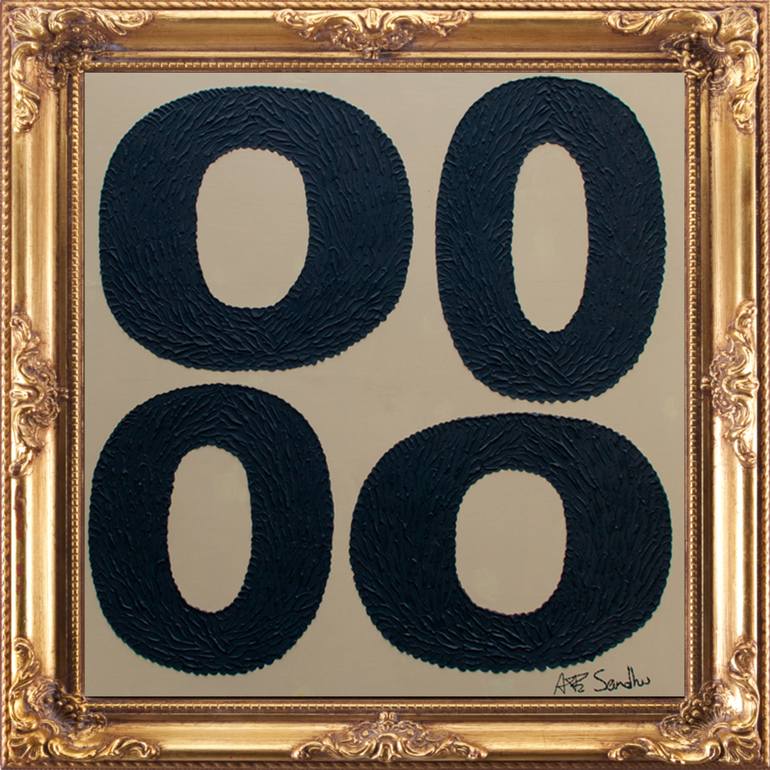


VIEW IN MY ROOM
4th dimension Painting
United Kingdom
Painting, Acrylic on Wood
Size: 48 W x 48 H x 1 D in
Ships in a Crate
About The Artwork
Introduction to my art The importance of this artwork is hard to judge, because the conversation itself can travel in circles. To help to break this cycle, let’s introduce some names; Jesus Christ. Guru Nanak. Buddha. Krishna. Muhammad. Moses. For Science you have; Charles Hilton. Edwin Hall. Henri Poincare. Isaac Newton. Steve Hawkins. Thomas Edison. August Möbius. Nicola Tesla, and Einstein. For Philosophy you have; Aristotle. Plato. Rene discards. Giorgio Bruno, and Freud. And for Art you have; Salvador Dali. Leonardo da Vinci. Pablo Picasso. All these wonderful people have one thing in common; Either they energized the fourth dimension, or they tried to study/ paint it. Thus, it is an important subject, within the different sectors ; Science, religion, philosophy, art. By studying these mathematical formulae, the following questions can be studied; 1. What is the crucial difference between the third dimension and other dimensions? 2. Are all equals the same? 3. The law of polarisation? 4. The law of position? 5. The law of entrance? 6. What are the sizes of other dimensions and how do they compare to the third dimension? 7. Does the law of supply and demand apply in other dimensions and if so what does it look like? 8. What is the Primal overall Direction of the force? 9. We have three primary colours which we know. What are the primary colours in the other dimension? 10. Can we Express loudness in a 2-dimensional form? What a fantastic time to be alive!! Maurice Golubov on the “fourth dimension” The term “fourth dimension”, although technically defined using mathematical computation, generally refers to the infinite relationship between time and space, a primary artistic concern during the early 20th century. Rejecting the traditions of one point perspective, artists began incorporating elements of multiple perspectives in their work, essentially departing from their own three-dimensional reality and creating a world of endless possibilities. Cubism, for example, shattered the picture plane, simultaneously portraying all sides of perspective anchored on a singular plane, “painting not as they saw it, but as they thought it”. Many artists of the early 20th century began using the fourth dimension as the foundation with which to explore the metaphysical content of geometric symbolism. They sought to create works which allowed the viewer to simultaneously exist in both the third and fourth dimension, without the use of traditional perspective or the familiarity of subjective iconography. While the fourth dimension in all spectrum's of visual art stands as an extension of the infinite, there are many different means of representation, such as time, space, or spirituality. This exhibition will highlight the successes of mid-20th century artists who worked to represent the ideologies of the fourth dimension within their work, namely Nassos Daphnis, Maurice Golubov, Budd Hopkins, De Hirsch Margules, Irene Rice Pereira, Rolph Scarlett and Charmion von Wiegand. Please visit our website for more information on these artists and others in our inventory. We don't go overboard on knotty art theory here, yet we were rather struck by this piece, by the arts and science writer, Arthur I Miller. It was published to coincide with the centenary of the death of Henri Poincaré: French physicist, mathematician, philosopher, and, according to Miller, the missing link between Picasso and Einstein. Miller writes that Poincaré 1902 book, Science and Hypothesis, pushed both the Spanish artist and the father of relativity towards great breakthroughs. Einstein came across Science and Hypothesis while working as a patent clerk in Bern, and was struck by the way Poincaré moved from the precepts of scientific theory towards a more general understanding of knowledge. Miller quotes Einstein: "Poincaré realised the truth [of the relation of everyday experience to scientific concepts] in his book." Yet, he was also felt restricted by Poincaré reliance on lab data, pushed Poincaré's ideas further, and hit upon the theory of relativity. Meanwhile, a friend of Picasso was also taken with the book, and took the trouble to explain some of the ideas to the artist. Miller writes: 'Picasso was particularly struck by Poincaré's advice on how to view the fourth dimension, which artists considered another spatial dimension. If you could transport yourself into it, you would see every perspective of a scene at once. But how to project these perspectives on to canvas?' Picasso's dilemma led, of course, to Cubism. Those with a yen for early 20th century scientific theory can read the whole book here, as it's now out of copyright. Any of you who like a few pictures with your words might want to take a look at our award-winning Picasso titles, offering a two-dimensional take on the fourth dimension
Original Created:2010
Subjects:Science/Technology
Styles:AbstractImpressionism
Mediums:AcrylicPaintFull spectrum
Details & Dimensions
Painting:Acrylic on Wood
Original:One-of-a-kind Artwork
Size:48 W x 48 H x 1 D in
Frame:Not Framed
Ready to Hang:Not applicable
Packaging:Ships in a Crate
Shipping & Returns
Delivery Time:Typically 5-7 business days for domestic shipments, 10-14 business days for international shipments.
Handling:Ships in a wooden crate for additional protection of heavy or oversized artworks. Crated works are subject to an $80 care and handling fee. Artists are responsible for packaging and adhering to Saatchi Art’s packaging guidelines.
Ships From:United Kingdom.
Customs:Shipments from United Kingdom may experience delays due to country's regulations for exporting valuable artworks.
Have additional questions?
Please visit our help section or contact us.
United Kingdom
Thousands Of Five-Star Reviews
We deliver world-class customer service to all of our art buyers.
Global Selection
Explore an unparalleled artwork selection by artists from around the world.
Satisfaction Guaranteed
Our 14-day satisfaction guarantee allows you to buy with confidence.
Support An Artist With Every Purchase
We pay our artists more on every sale than other galleries.
Need More Help?